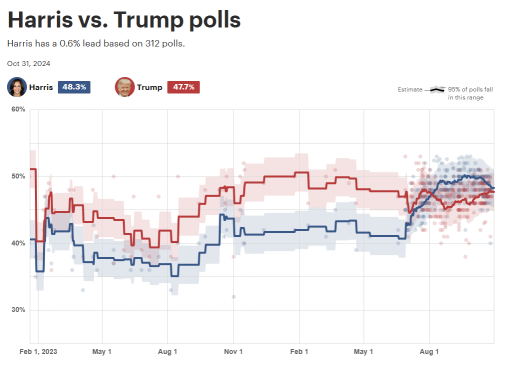No Data
The "Universal Bank" has officially given a "diagnosis" to the USA: under heavy tariff pressure, the USA will be in recession this year.
JPMorgan pointed out that investors should be particularly wary of the possible "stagflation" scenario — where economic stagnation coexists with inflation. The bank expects the Federal Reserve to begin cutting interest rates in June and to continue reducing rates at each subsequent meeting until January of next year, lowering the benchmark rate from the current Range of 4.25%-4.5% to a Range of 2.75%-3%.
Traders are betting heavily on an emergency interest rate cut by the Federal Reserve: they may take action before the meeting.
Data shows that after a significant market drop on Thursday, open contracts for April Federal Fund Futures surged, with a large Buy of 0.048 million contracts in the early session, equivalent to about $1.9 million per basis point of risk (DV01). Further data on Friday revealed a significant increase in open contracts in the U.S. Treasury futures market, indicating that the market is establishing entirely new long positions rather than closing existing short positions. Analysis suggests that since this futures contract will expire in the week prior to the Federal Reserve's next meeting on May 7, any policy actions taken by the Federal Reserve before that will directly benefit the related long positions.
Before the impact of tariffs, the USA's non-farm payrolls in March exceeded expectations with a slight increase in the unemployment rate to 4.2%.
In March, the USA's non-farm employment grew strongly and exceeded expectations, and the unemployment rate slightly increased, indicating that despite the global economy facing comprehensive tariff impacts, the labor market in the USA remains robust.
The number of non-farm employment in the USA in March exceeded expectations, causing traders to reduce their bets on a rate cut in May.
On April 4, the data released by the USA Bureau of Labor Statistics showed that the seasonally adjusted non-farm employment in the USA for March was recorded at 0.228 million, exceeding the market expectation of 0.135 million. The number of new non-farm jobs for January was revised from 0.125 million to 0.111 million; for February, it was revised from 0.151 million to 0.117 million. After revision, the total new jobs for January and February were 0.048 million lower than before the revision. The USD slightly narrowed its decline after the USA data was released, the latest drop being 0.10%, reported at 101.91. After the non-farm data was released, spot Gold briefly dropped nearly 9 dollars.
Either there will be no interest rate cuts, or there will be five cuts! There is a significant divergence in market expectations for the Federal Reserve's interest rate cuts, and "investors need to be prepared for everything."
The market's divergence on the Federal Reserve's rate-cutting path has reached a historically rare level, currently, the probabilities of not cutting rates, cutting rates two to three times, or even cutting rates more than five times during an economic recession are roughly equal.
The Federal Reserve is taking a wait-and-see approach: Jefferson states that interest rates will remain unchanged while fully assessing the impact of Trump's new policies.
Against the backdrop of severe fluctuations in the Global economic landscape, the Vice Chairman of the Federal Reserve, Philip Jefferson, released key policy signals on Thursday (April 3). At the Atlanta Federal Reserve meeting, this core figure steering USA monetary policy clearly stated that in the face of the trade policy storm initiated by the Trump administration, the Federal Reserve will maintain its Global Strategy and keep the current interest rate Range of 4.25%-4.50% unchanged, emphasizing the need for ample time to evaluate the composite effects of multiple policy variables on the economy. Jefferson systematically explained the decision-making logic for maintaining the interest rate unchanged based on three main pillars: first, the current policy has established a 'moderate restriction' of...





RENE MBAH MBAH : run
 for real
for real